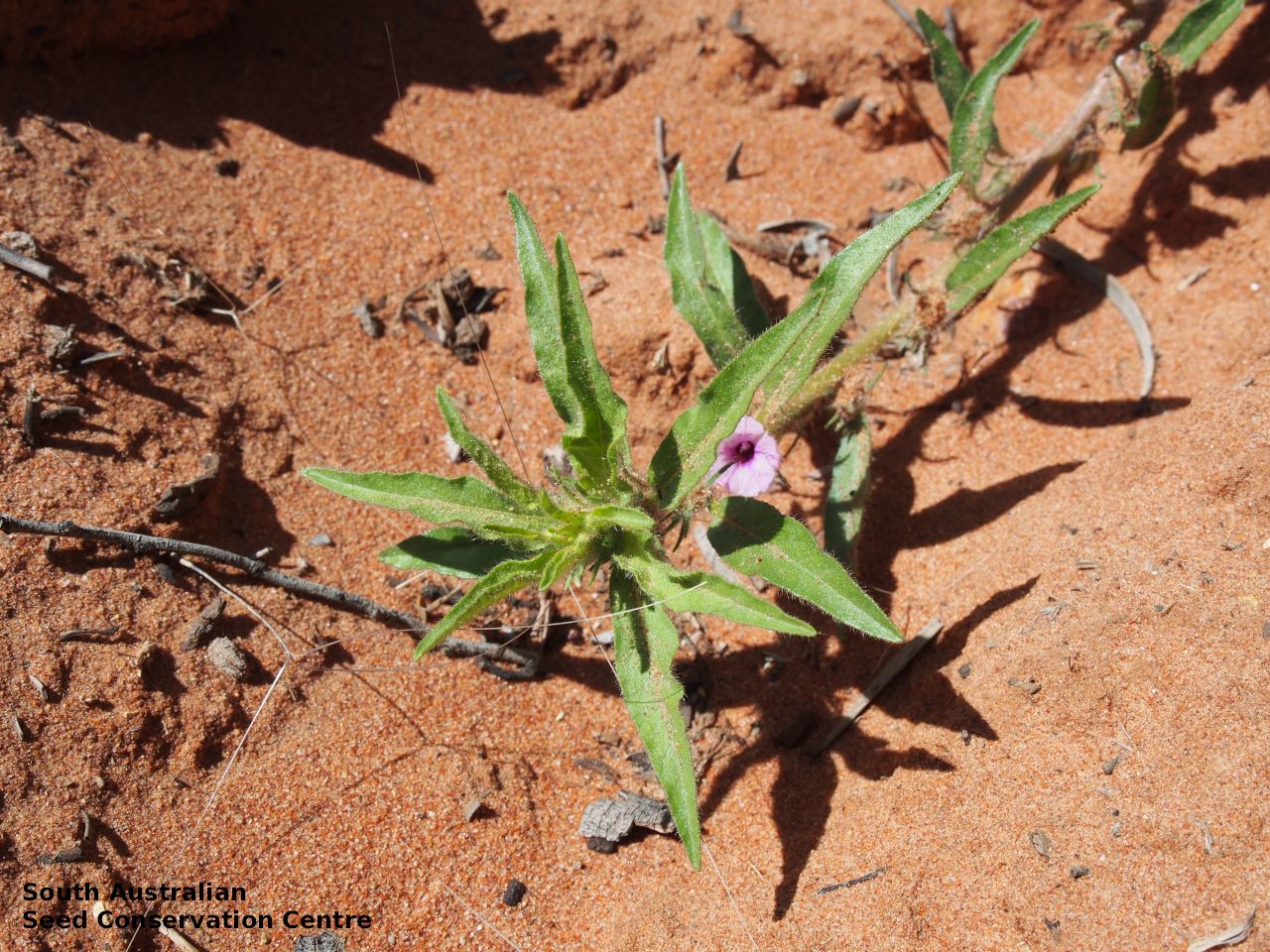
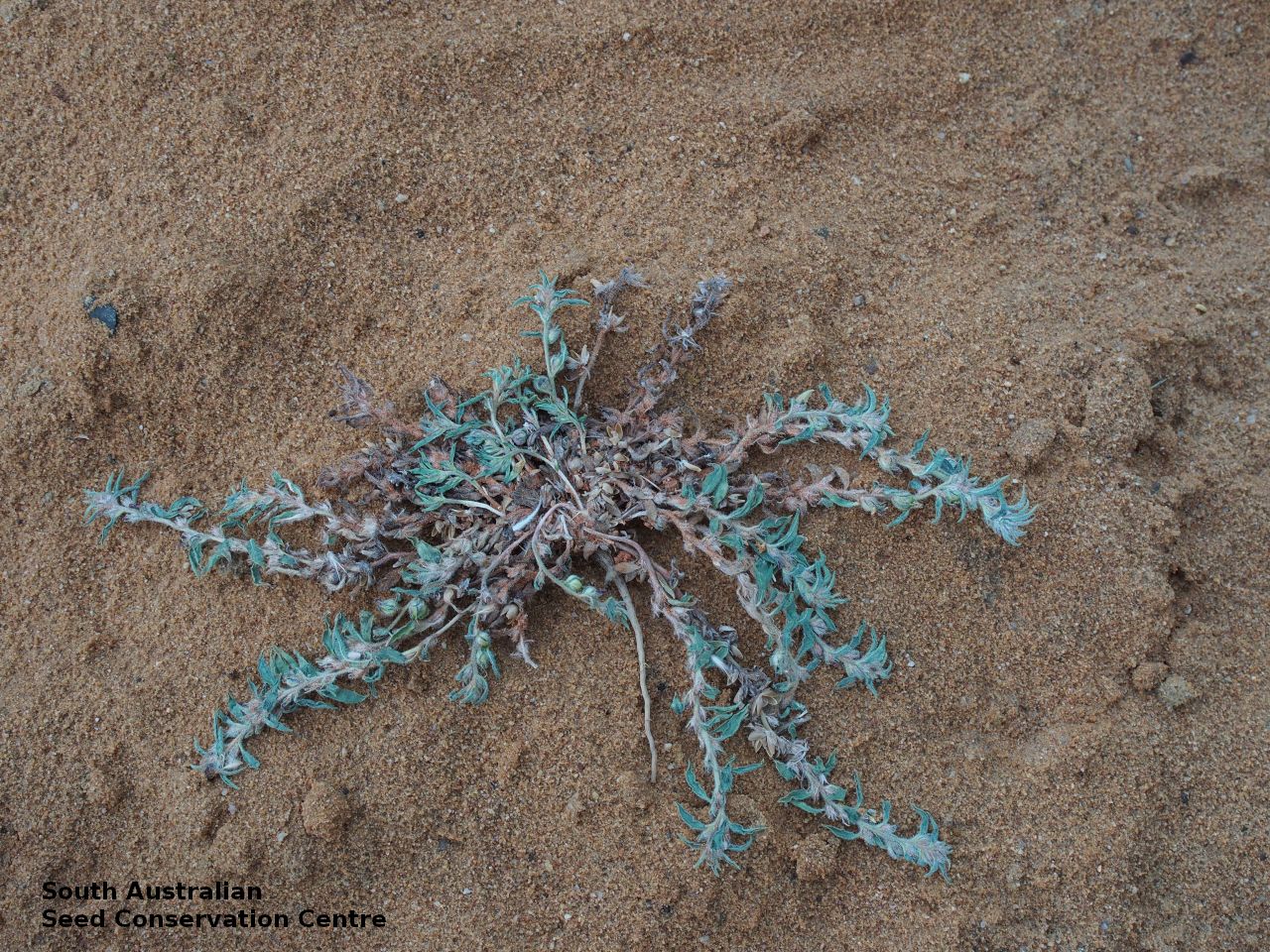

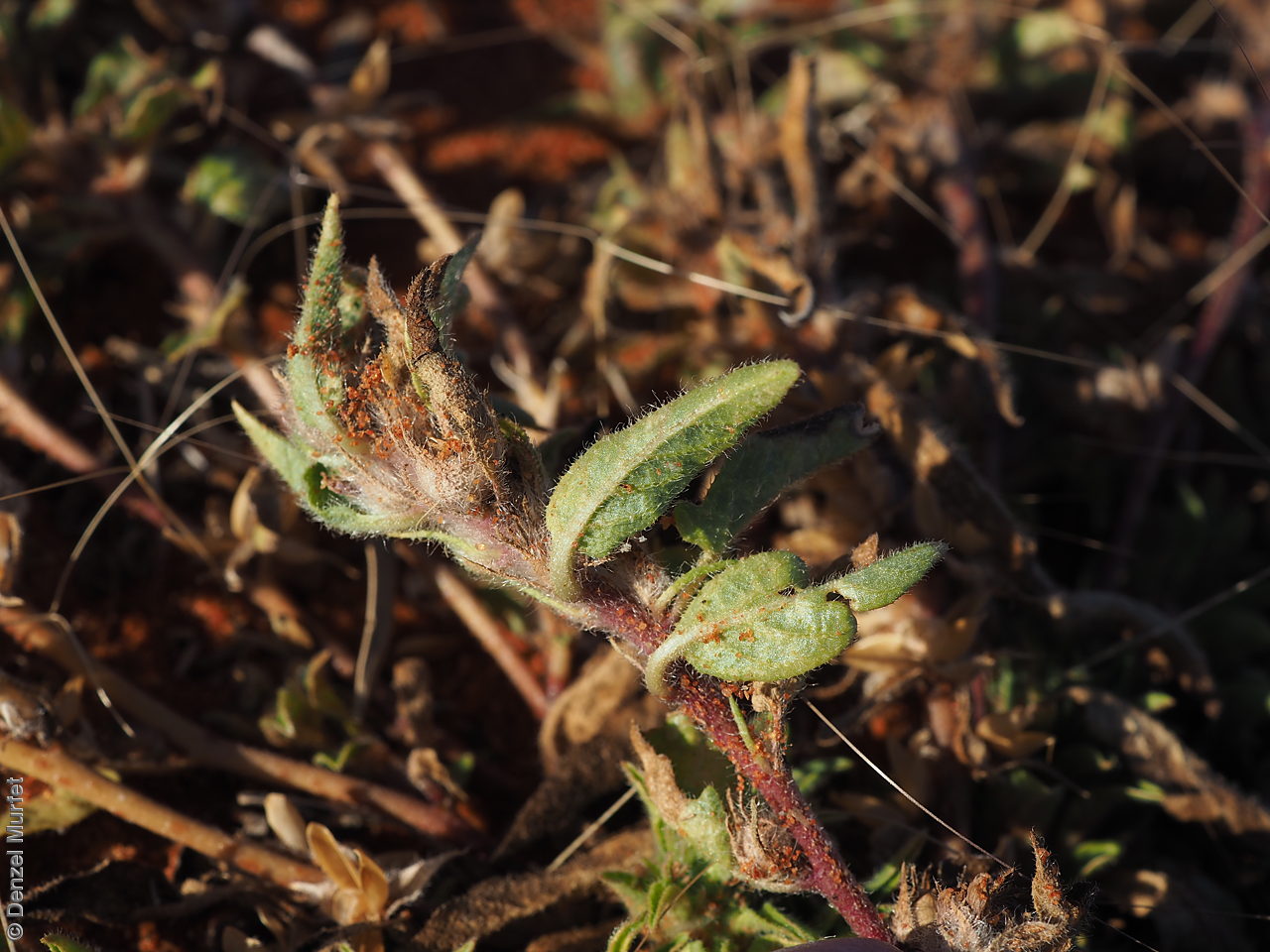


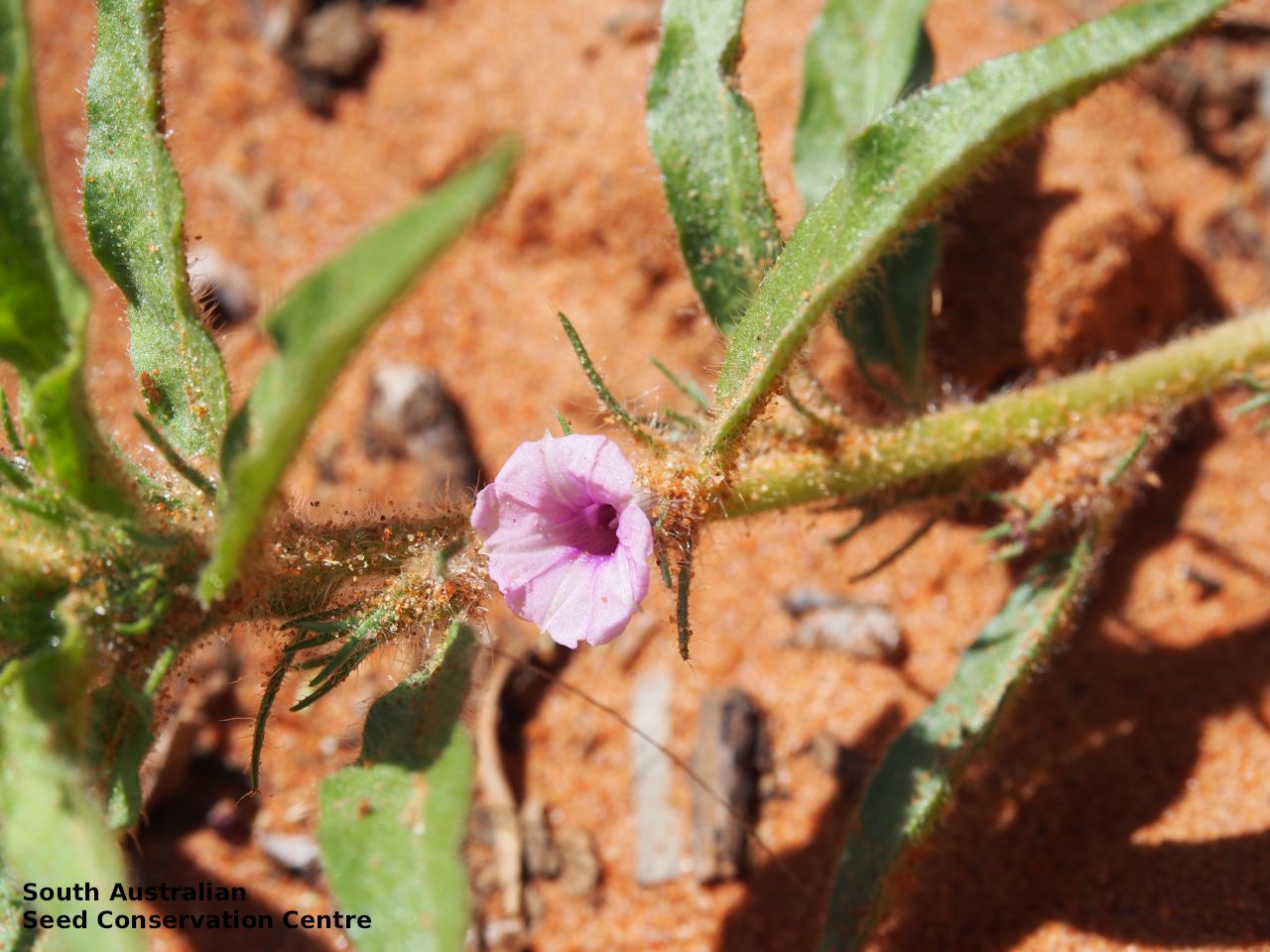
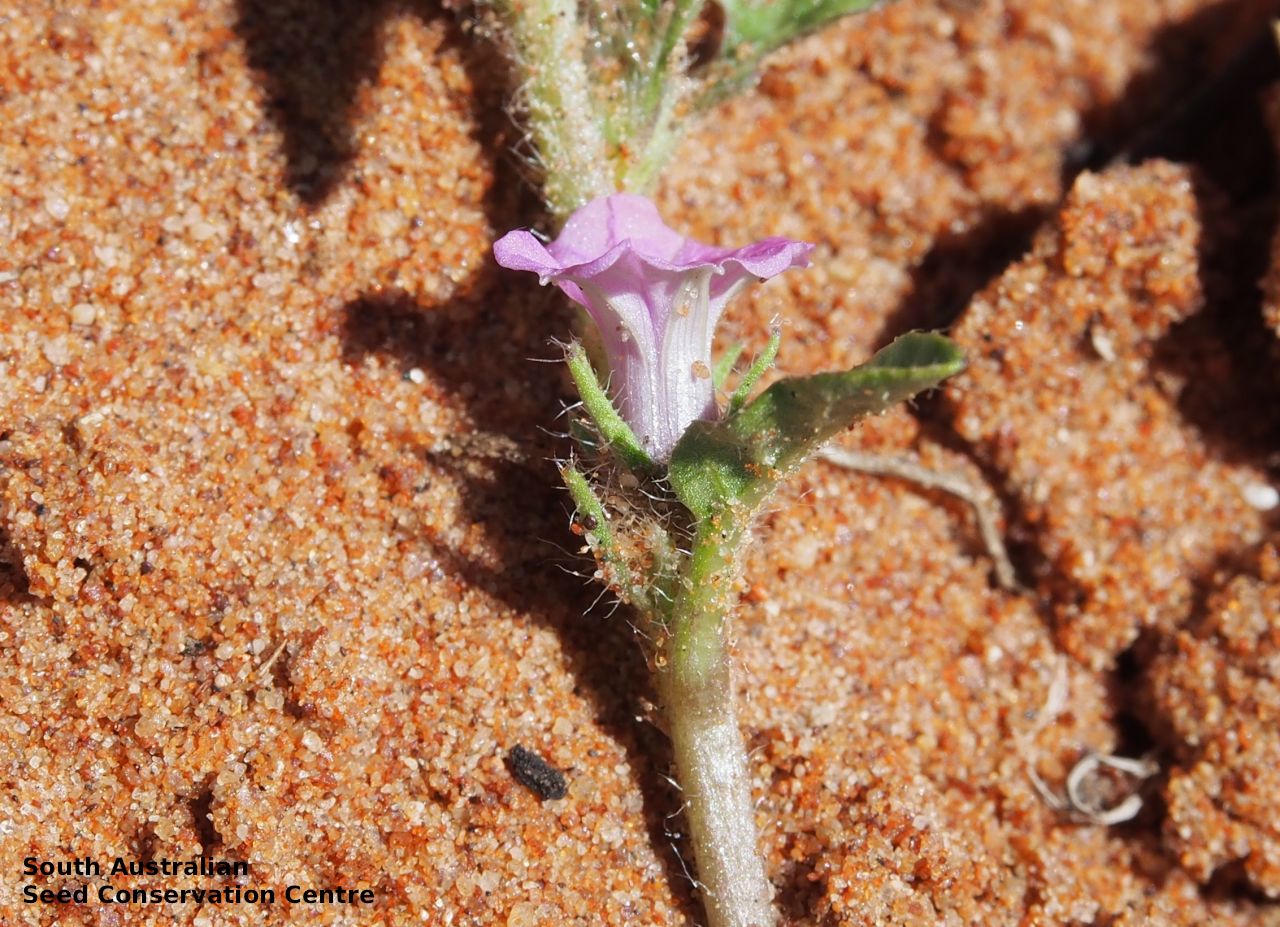
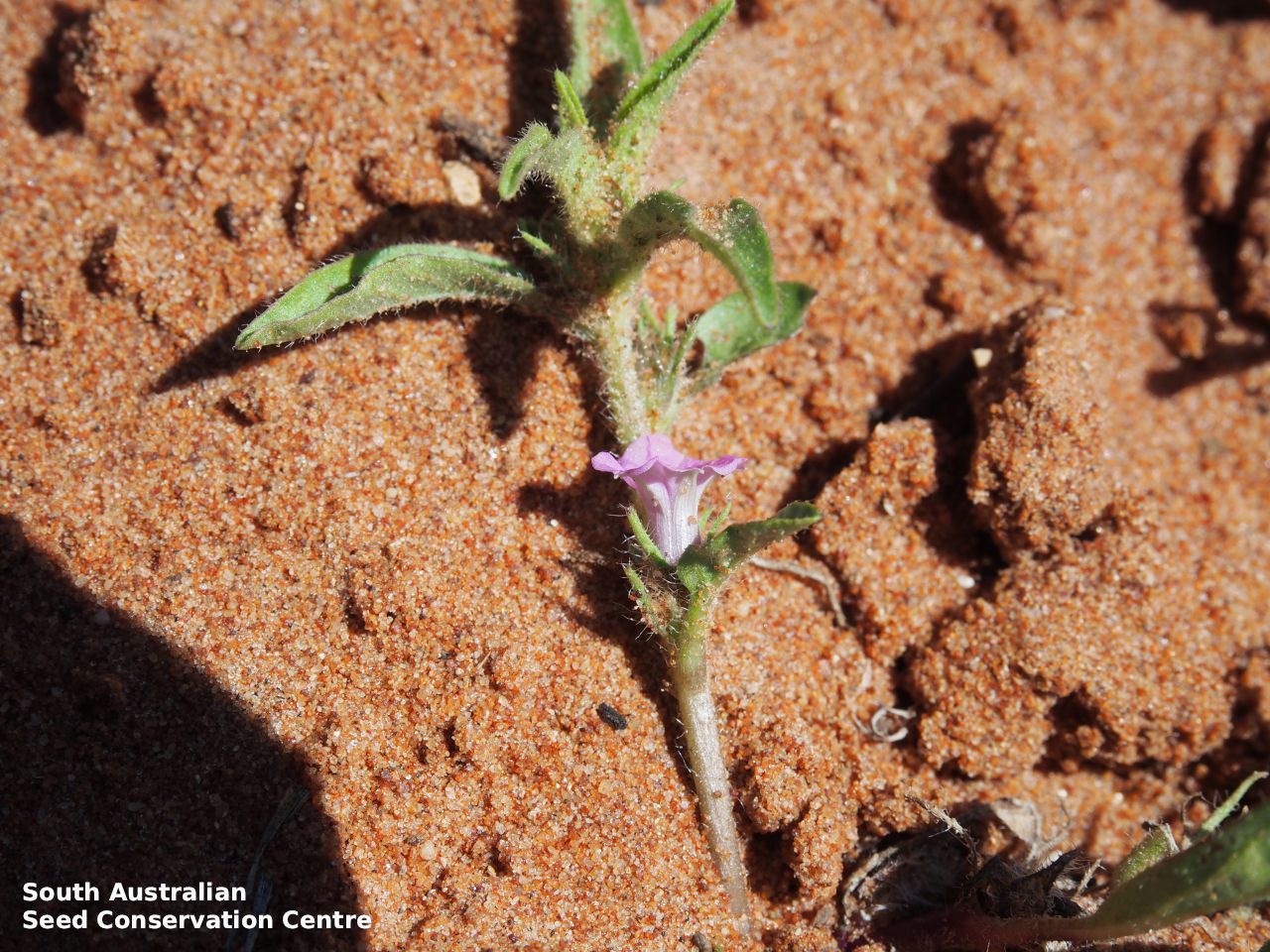
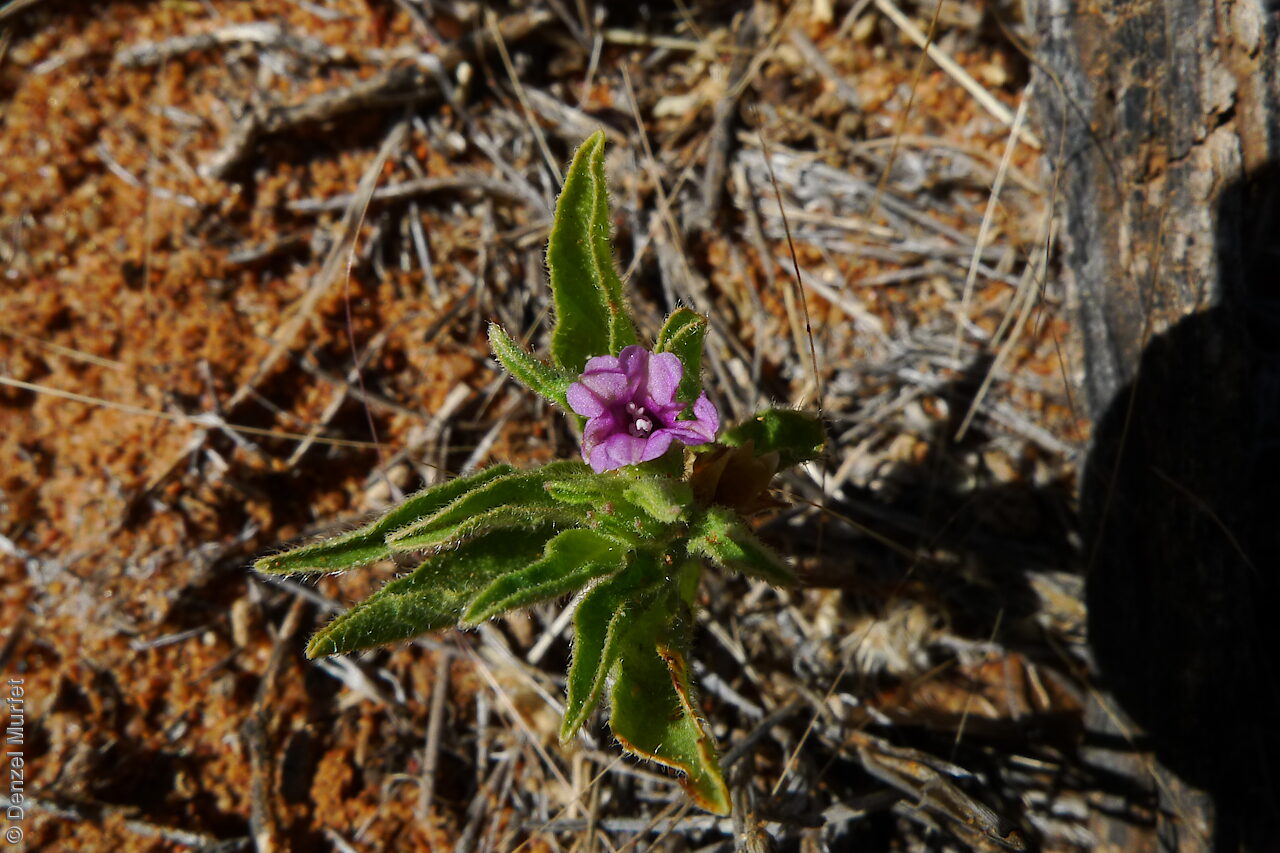


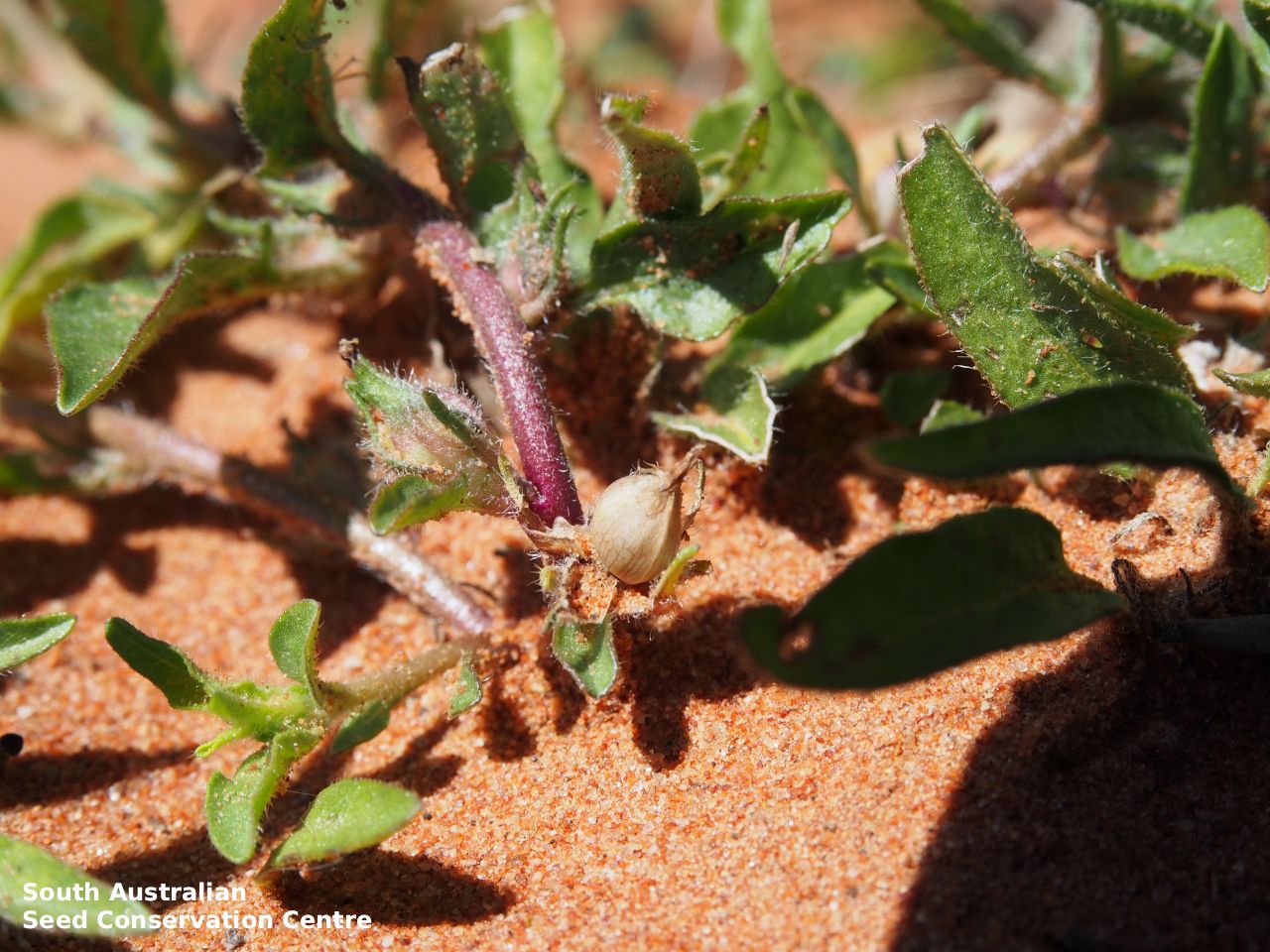
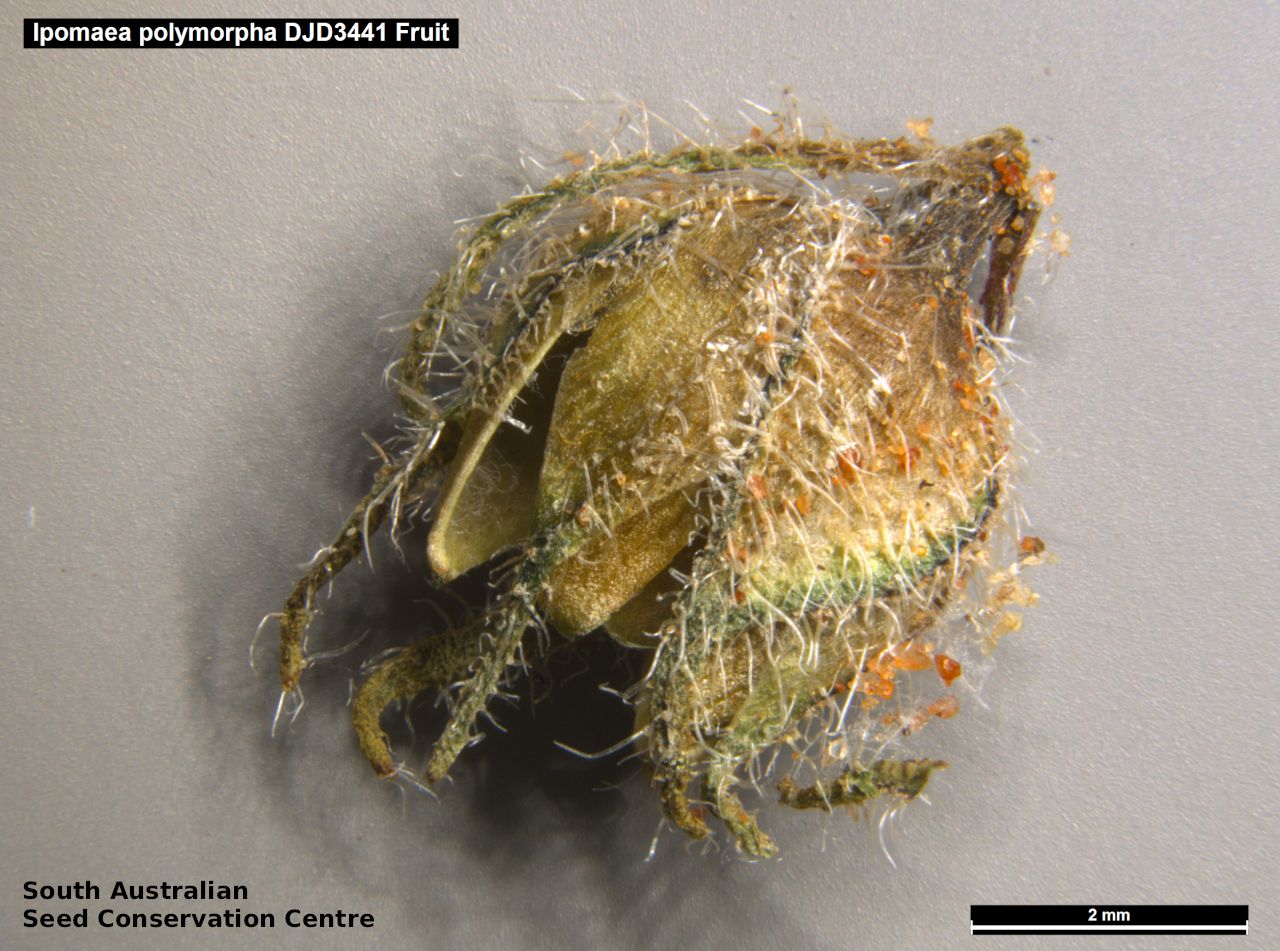
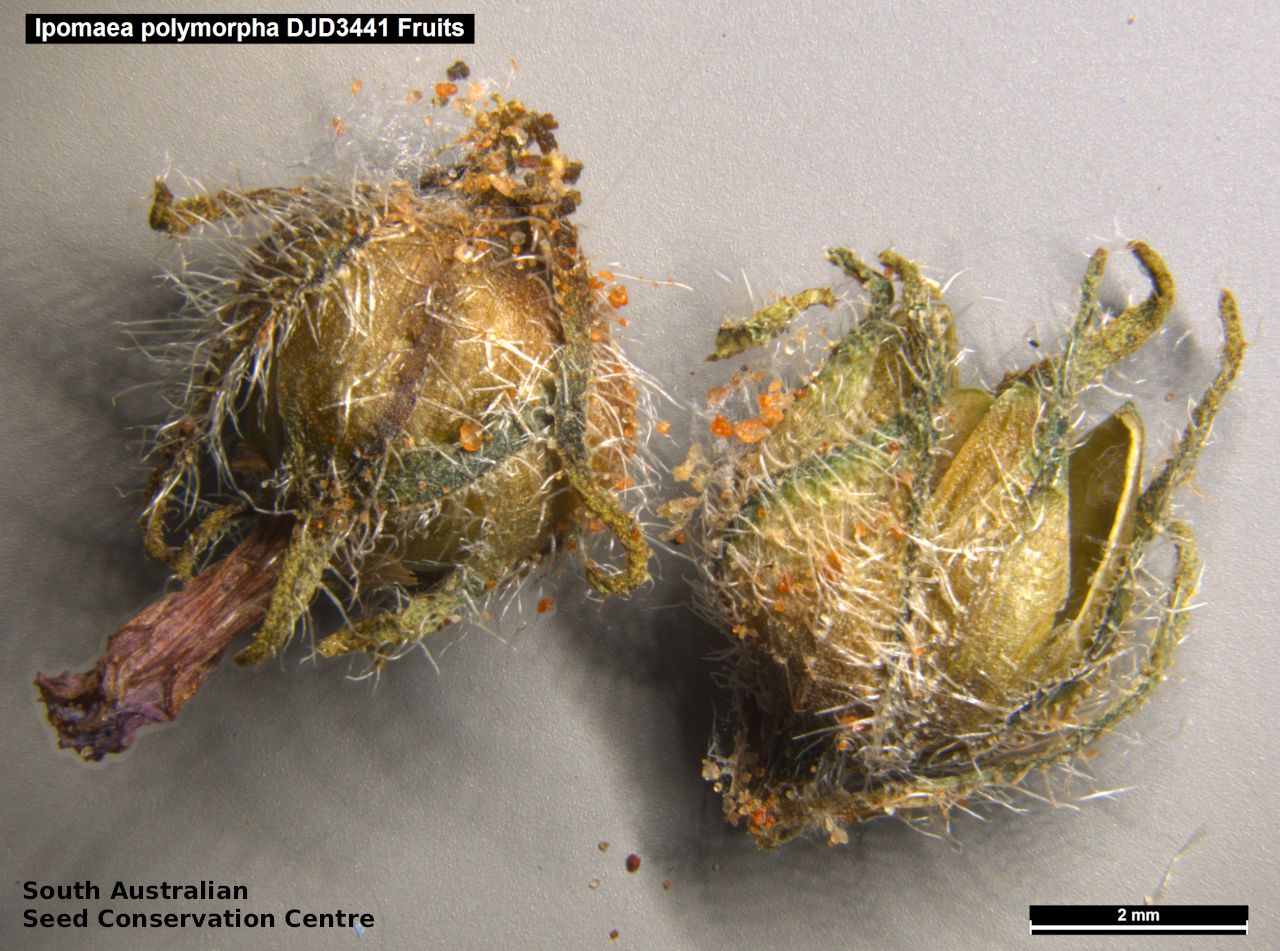
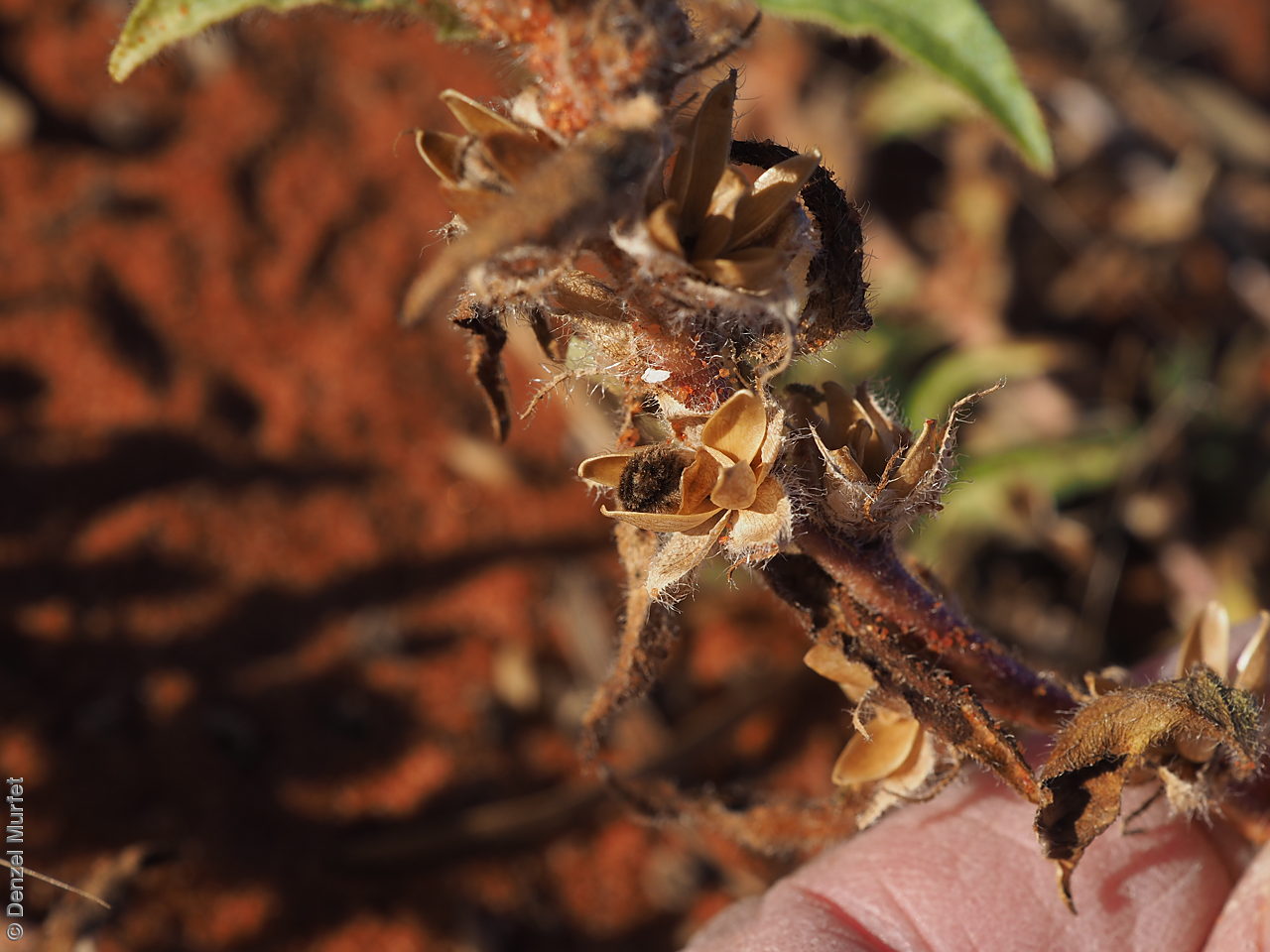
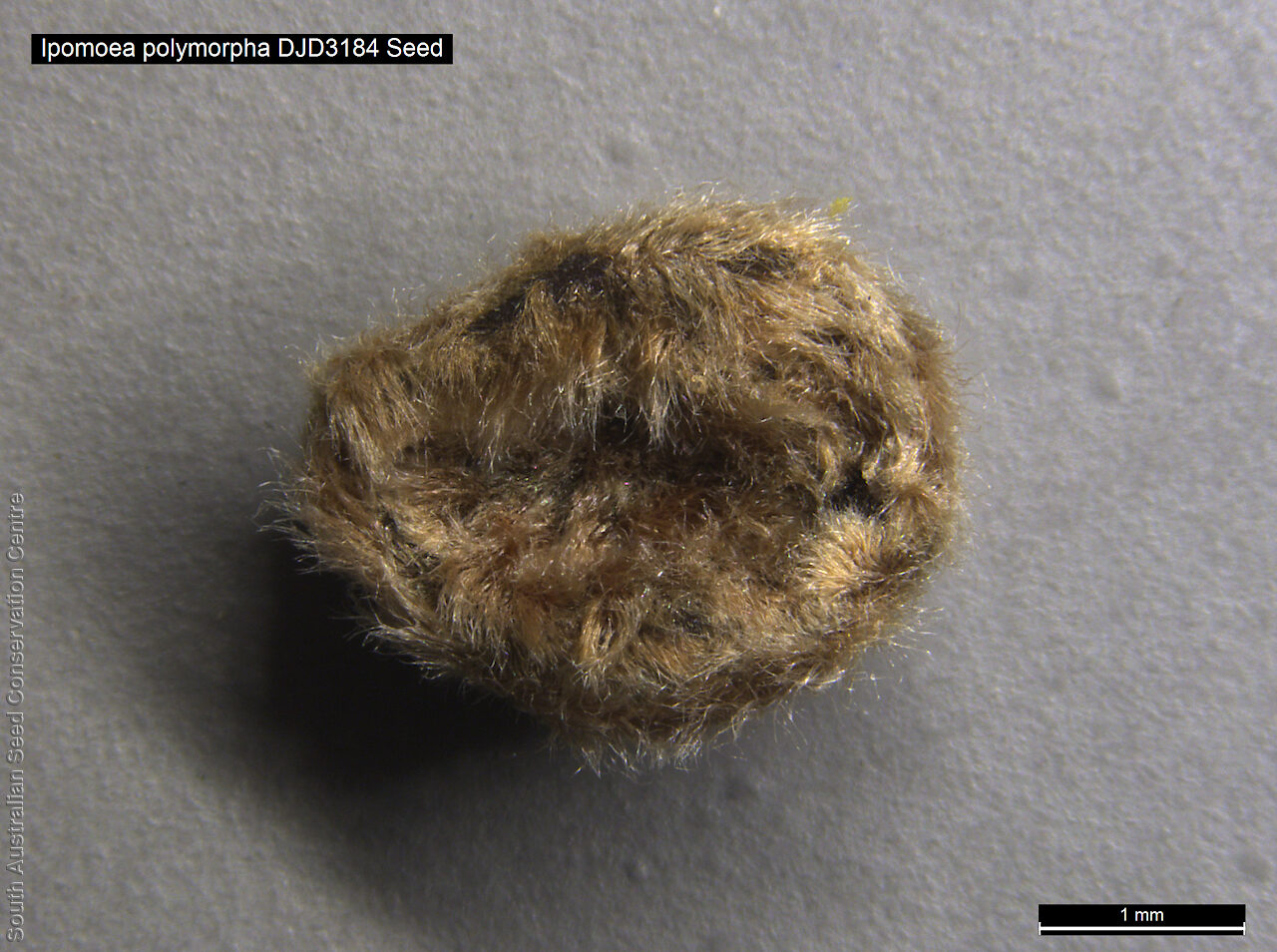
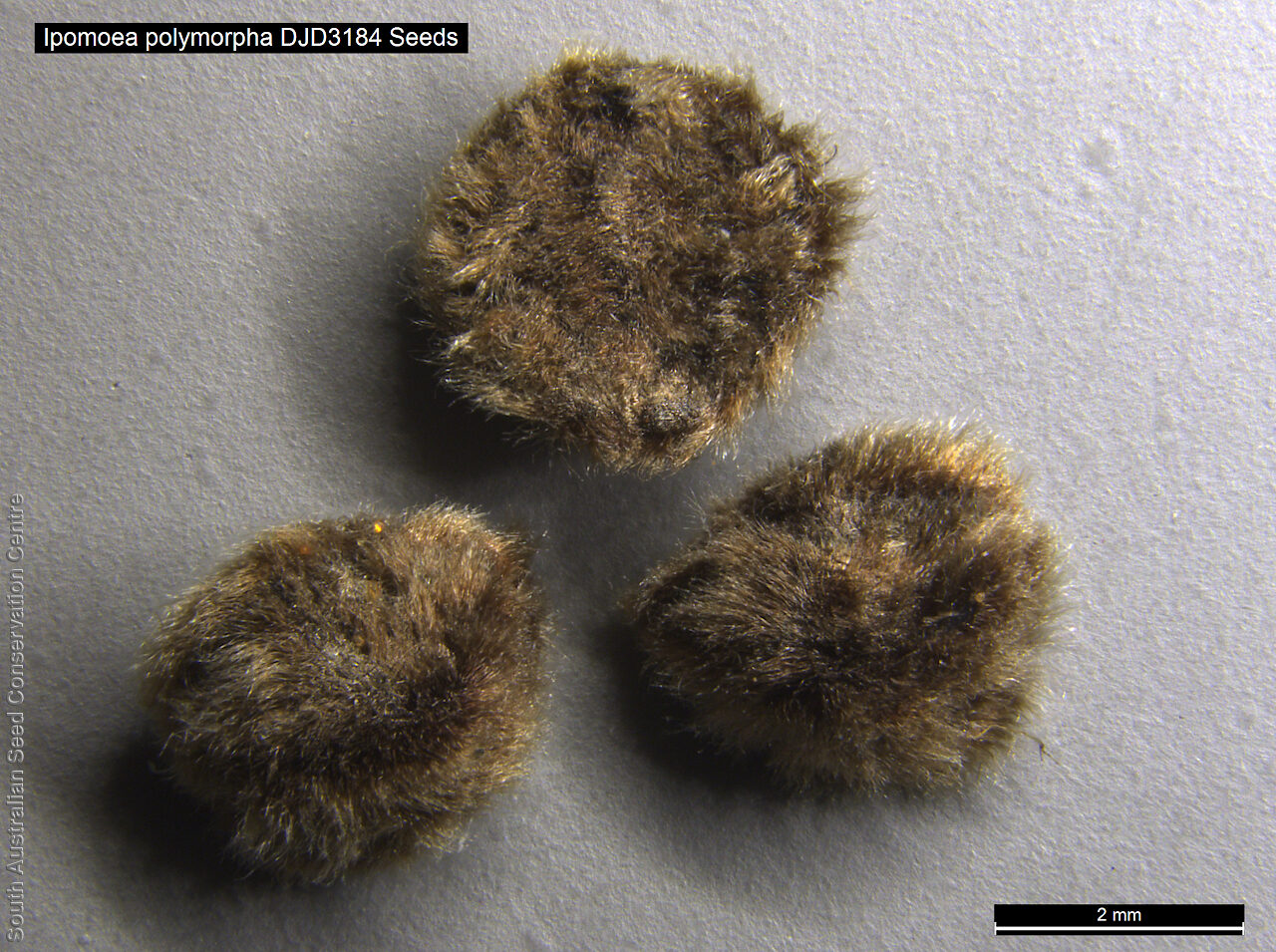




Botanical art
Prior names
Ipomoea heterophylla
Common names
Silky Cow-vine
Etymology
Ipomoea from the Greek 'ips' meaning a worm (mistakenly supposed by Linnaeus to mean the bindweed) and 'homoios' meaning like; referring to its twining habit. Polymorpha means many forms is very appropriate, since individuals of this species exhibit many different morphologies and inhabit a broad range of ecological situations.
Distribution and status
Found in the north-eastern part of South Australia, growing on sandy, rarely clay soils, in open Acacia and eucalypt communities. Also found in Western Australia, Northern Territory, Queensland and New South Wales. Native. Common in South Australia. Common in the other states.
Herbarium region: Lake Eyre
AVH map: SA distribution map (external link)
Plant description
Soft hairs annual with ascending or trailing stems. Leaves elliptic, entire to lobed, to 6 cm long and 2.5 cm wide, bluntly acute, base tapering. Inflorescence axillary with solitary, stalk-less, funnel-shaped, limb pink to purple, with a darker throat flower. Flowers throughout the year but mainly between January and May. Fruits are brown globular capsules to 5.5 mm diameter, with a persistent style base and splitting into 4 valves. Seeds are brown sectoroid seed to 3 mm long and 3 mm wide, covered in long dark and light brown hairs. Seed embryo type is folded.
Seed collection and propagation
Collect seeds between February and July. Collect capsules that are maturing, turning brown and contain hard seeds inside. Capsules can be opened or unopened and some seed can be collected from the ground under the plant. Place the capsules in a tray and leave to dry for one to two weeks. Then rub the capsules gently by hand or with a rubber bung to dislodge the seeds. Use a sieve to separate the unwanted material. Store the seeds with a desiccant such as dried silica beads or dry rice, in an air tight container in a cool and dry place. This species has physical dormancy that needs to be overcome for the seed to germinate (e.g. nicking the seed coat).